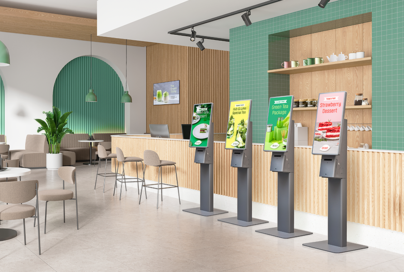LG LOOKS TO VERTICAL INTEGRATION TO DEVELOP ITS NEXT GENERATION SMARTPHONE
LG Electronics, LG Chem, LG Display, LG Innotek
Collaborate on Most Technologically Advanced Device to Date
SEOUL, Aug. 26 -– The next major smartphone from LG Electronics (LG) will be a as significant for the way it was developed as for its performance and specifications. That’s because LG Electronics and its vertically-integrated sister companies LG Chem, LG Display and LG Innotek developed the device together from the start to include each company’s best technology and innovation to set a new standard in the smartphone market.
As the first Quad-Core LTE smartphone to utilize Qualcomm’s latest Snapdragon™ S4 Pro APQ8064 processor, LG’s upcoming device will not only offer blazing fast performance but also longer battery life, thinner profile, brighter display and a new touchscreen panel technology as a result of the vertically-integrated development process.
LG Chem, Korea’s oldest and largest chemical company and a global innovator in electric car batteries, developed a new battery that offers greater energy capacity without compromising on size and weight. Standard mobile phone batteries have a lifespan of 500 charges in best-case conditions. Utilizing LG Chem’s high-density technology, the battery that was developed for the new flagship smartphone provides more power than other similarly-sized batteries by running 60 percent more efficiently. The new battery has a lifespan of 800 cycles, a first for a mobile device.
Industry leader LG Display’s contribution to the project was in the development of a new mobile display that is clearer than AMOLED displays but requires less power. LG Display’s True HD IPS+ Display is sharper than today’s AMOLED displays due to its high pixel density of 320ppi (1280×768 pixels) and Stripe RGB IPS Panel. The new display is capable of generating 470 nits of brightness while consuming 70 percent less power compared when displaying a white background. Furthermore, True HD IPS+ Display does not suffer from screen burn-in as AMOLED displays have been known to do.
Partnering with LG Display, solution-provider LG Innotek developed the G2 Touch Hybrid Display after investing significantly to raise its R&D capabilities in touchscreen technology. The G2 Touch Hybrid Display is a unibody unit that eliminates the gap between the glass and the LCD panel as found in traditional touchscreens. As a result, the thickness of LG Innotek’s touchscreen panel was reduced by 30 percent and displays images that seem to “touch” the fingertip without the glass creating a barrier in between.
“Working closely with our affiliate companies allowed us a degree of control that very few smartphone makers have with their component partners,” said Dr. Jong-seok Park, president and CEO of LG Electronics Mobile Communications Company. “Our next smartphone will be a game changer for us because we were able to incorporated all the best-of-best technologies from our sister companies with one single objective in mind -– to give customers the best user experience that we were collectively capable of.”
# # #


